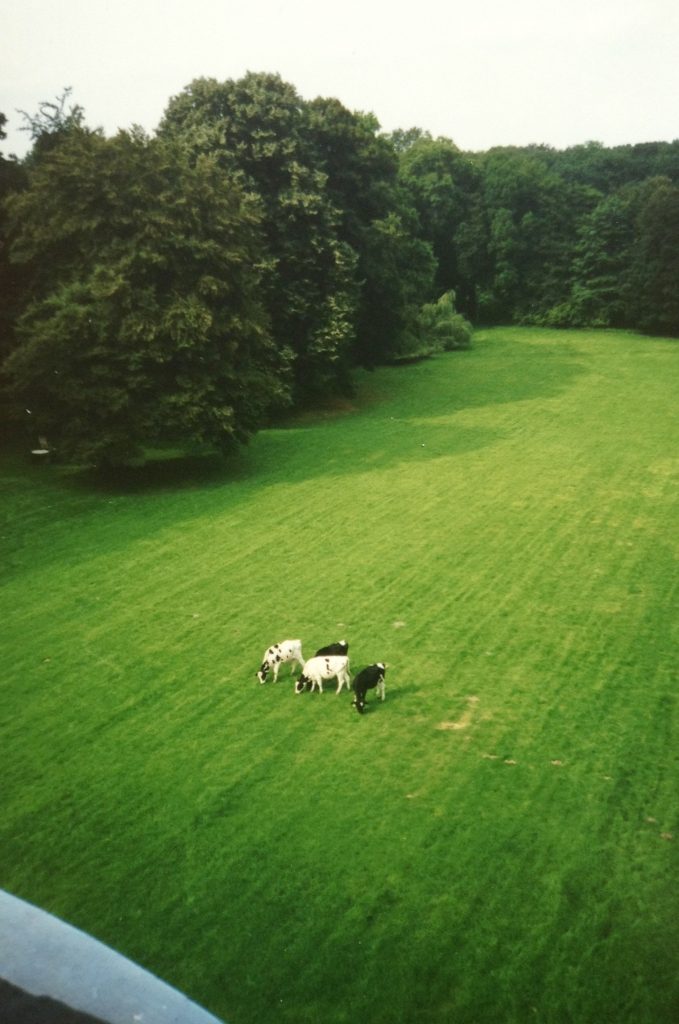I just wanted to share this beautiful old painting by Hans Seyppel of the tea house at Haus Meer, half obscured by the barriers of the level crossing.
The original file can be found here.
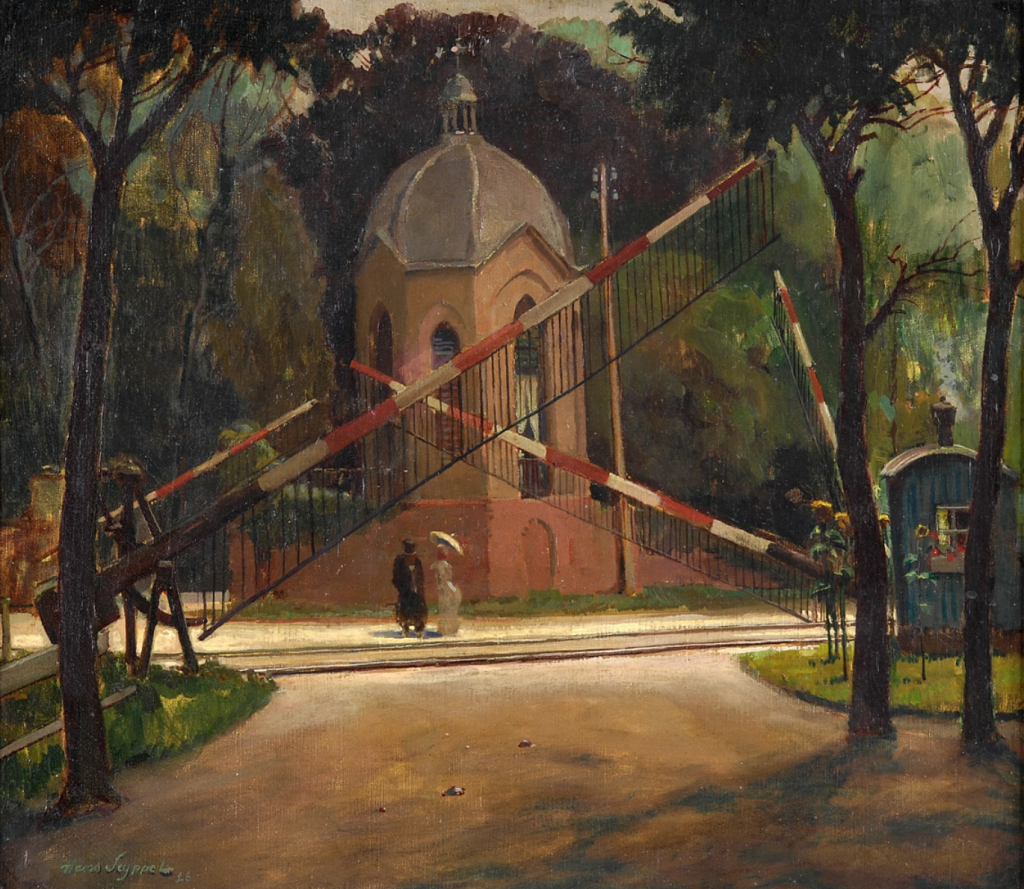
The Devil's Missal by Cathy Dobson
I just wanted to share this beautiful old painting by Hans Seyppel of the tea house at Haus Meer, half obscured by the barriers of the level crossing.
The original file can be found here.

Earlier today I visited the archaeological museum at Burg Linn. The archaeological items are housed in a converted WW2 bunker next to the castle. On the third floor, hidden away behind an iron grille is a tiny, beautiful and very evocative library.
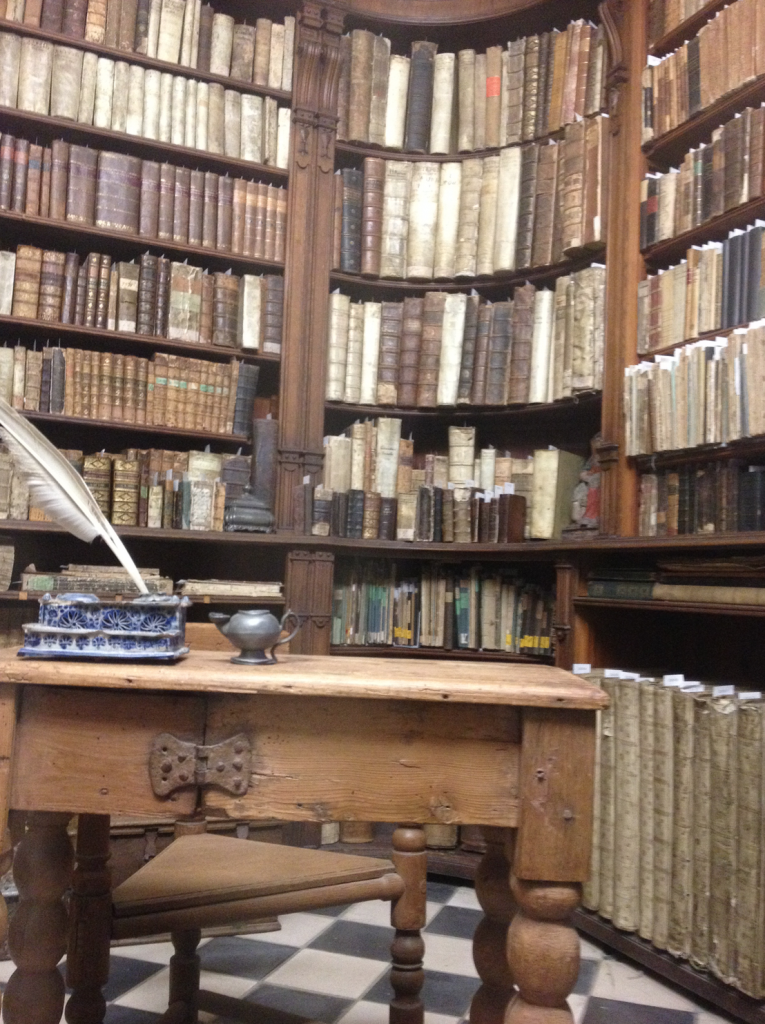
Technically it isn’t actually a library. It is a collection of old books, mostly dating from the 16th and 17th centuries, brought together in the 1930s. Two books in the collection were of particular interest because of their connection with Meerbusch-Ossum and Schloß Pesch.
The first (No. 354) contains a handwritten note inside the cover: ‘Following the ransacking of the library at Schloß Pesch on 7th October 1794, which was ordered by the Prince and carried out by the inhabitants of Linn and Ürdingen, a total of 9860 rare volumes were stolen, to which the poor state of this book bears testimony.’ Indeed, this statement is underlined by the very obvious rodent damage to the book in question.
The second book (No. 348) (printed in 1583 in Frankfurt) has two bullet holes in it. Again there are inscriptions on the inside cover explaining the origins of this damage. The first, in French, declares a revolutionary (citroyen Republiquain) to be the new owner – presumably plundered during the Franco-Prussian war. The second, in Latin, by a pastor of Lank, in whose parish Schloß Pesch is situated, stating that the book had been given to him, with the bullet holes already in it, by a citizen of Latum following fighting in late October 1794 on the Rhine. Apparently the book had been found about the person of a dead soldier.
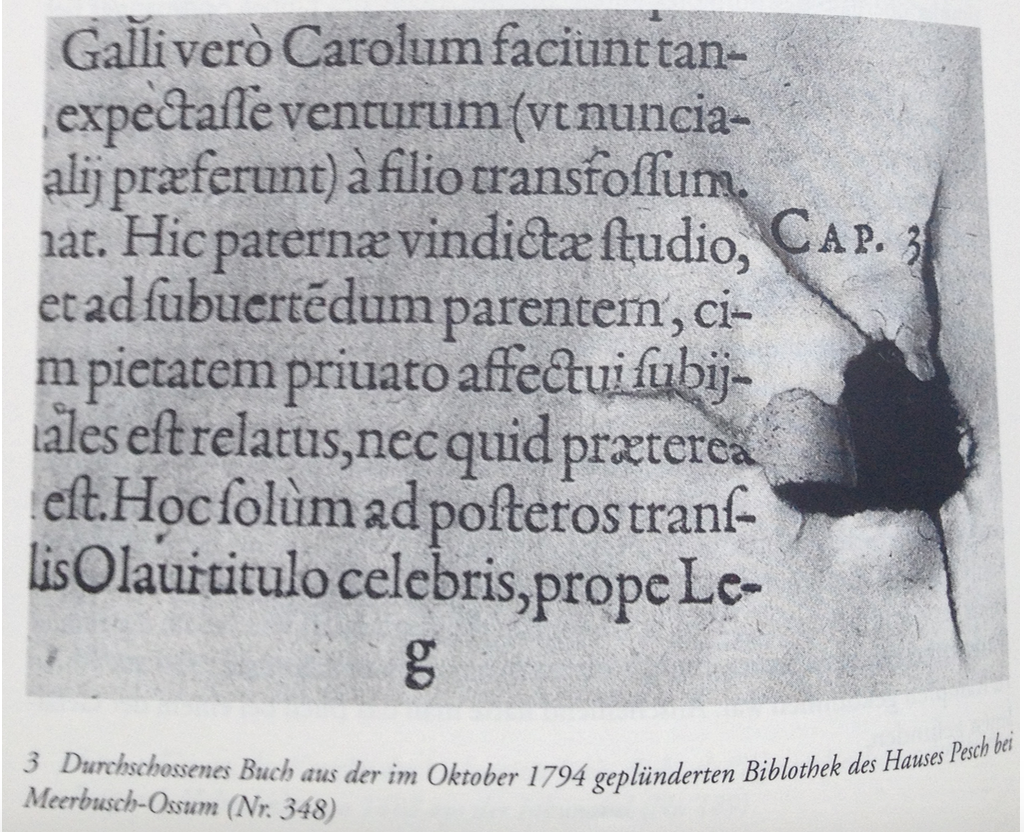
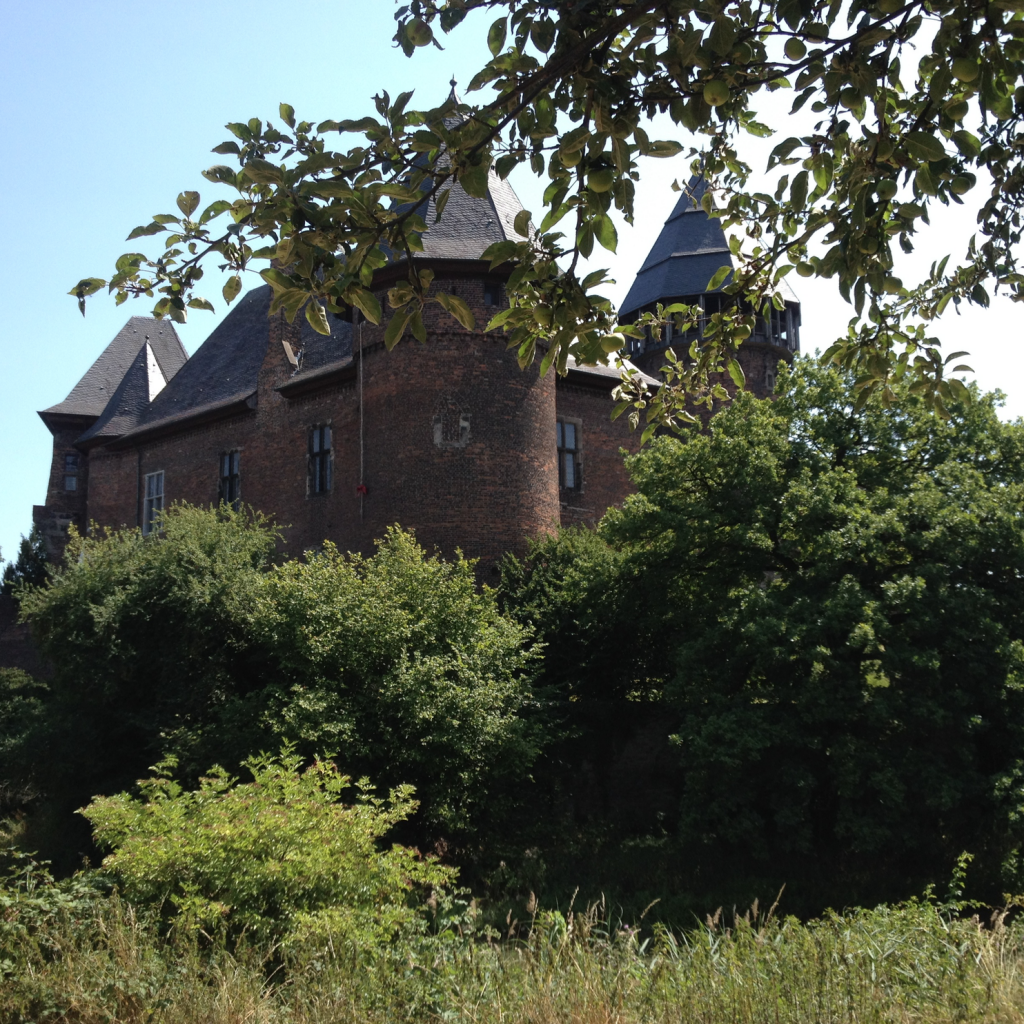
In The Devil’s Missal, the main character, Holda, spent her early childhood around Schloss Pesch. When she returns as an adult, revisiting those scenes sparks some strange memories… conscious and subconscious.
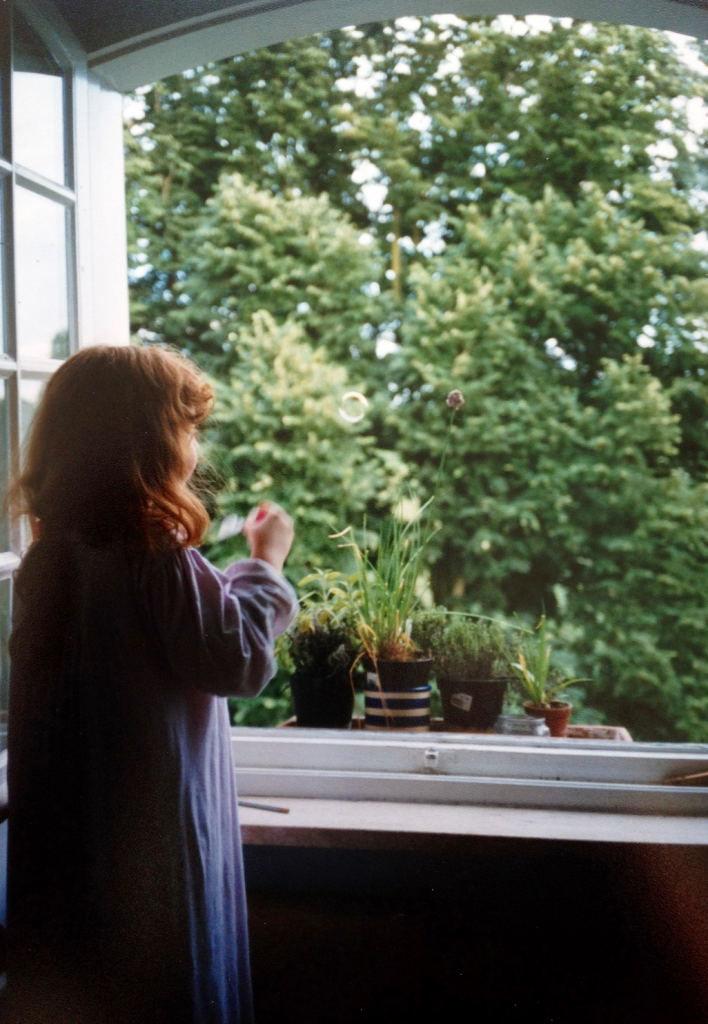
I realised that the photos on this blog so far have only shown Schloss Pesch from the front as you enter through the main gate. Holda, the main character in The Devil’s Missal used to enter the grounds from the Herrenbusch, which was easy to do in the 1990s, but the path has now been blocked off and a thick hedge blocks the way from the field at the rear.
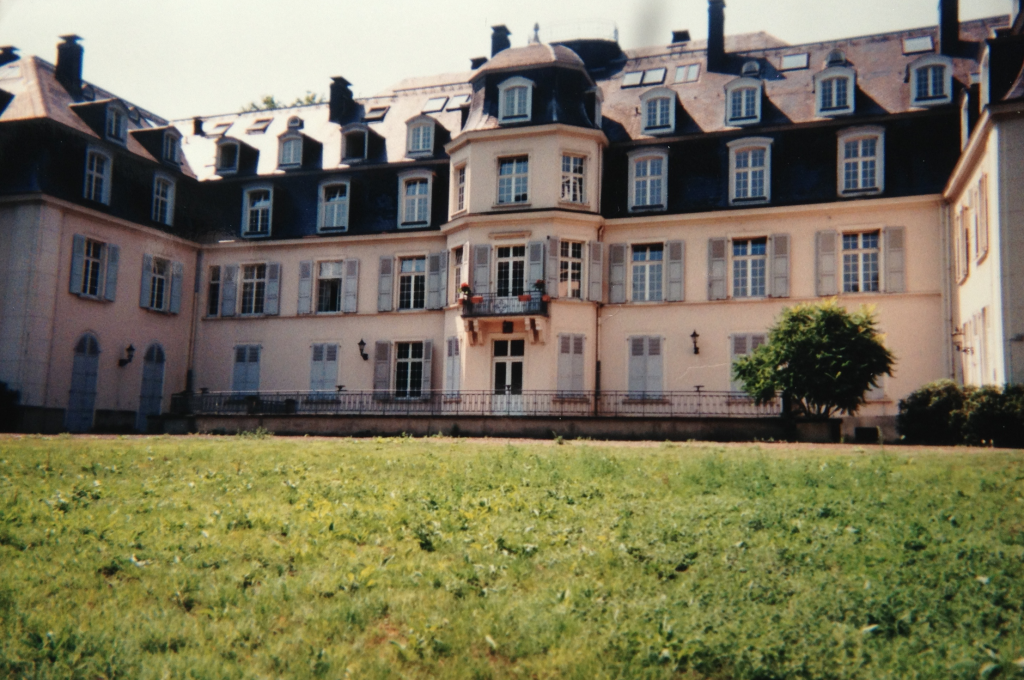
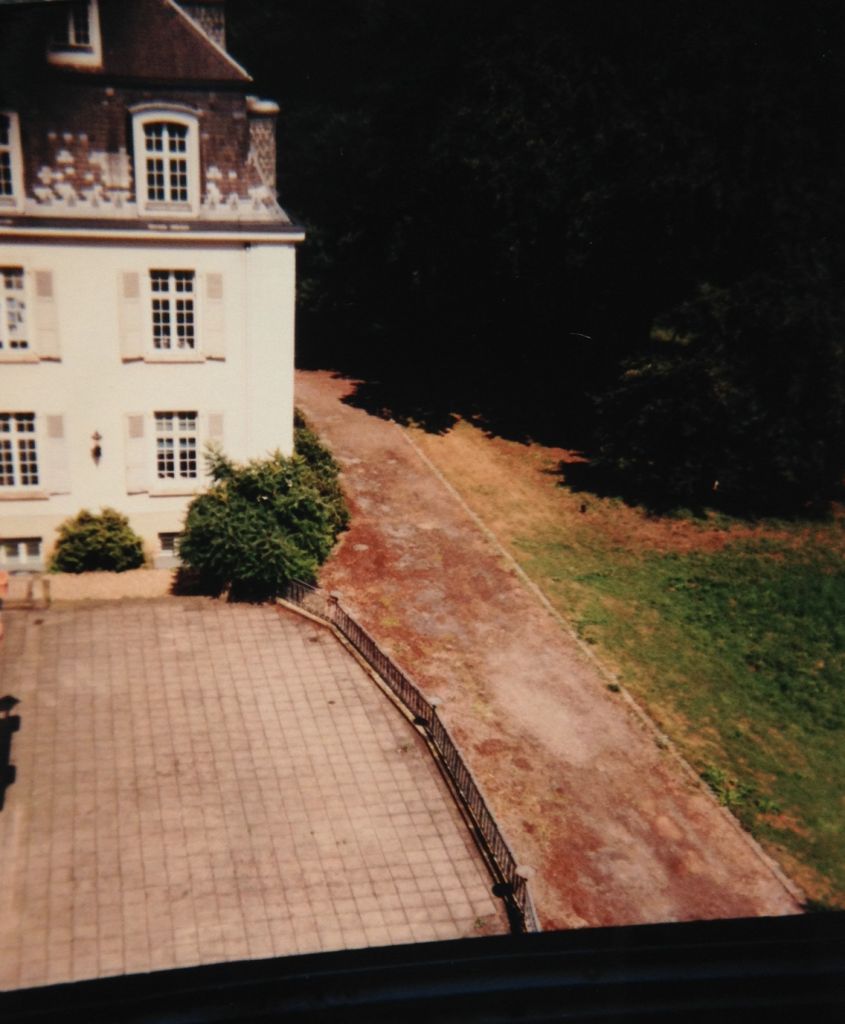
One of the confusing things for newcomers to Meerbusch is the sheer number of place names used for different parts of the town. Meerbusch was only officially recognised as a town on 20. May 1976. Prior to that it consisted of a loose collection of eight formerly independent villages: Büderich, Osterath, Lank-Latum, Ossum-Bösinghoven, Strümp, Langst-Kierst, Nierst and Ilverich, which went by the collective title ‘Waldgebiet Meerbusch’ – the forested region of Meerbusch.
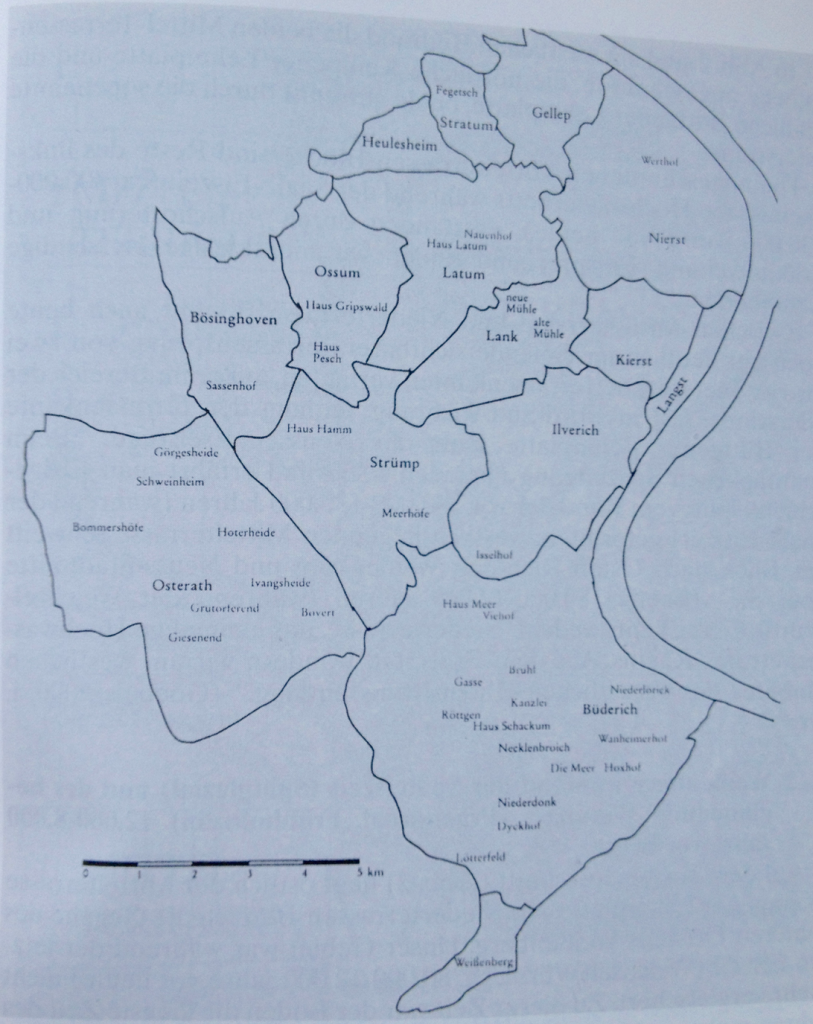
As you enter the Herrenbusch by Haus Gripswald there is the obligatory information board for visitors complete with map and basic local history. This one has a rather lovely sketch of Haus Gripswald which gives a much better impression of the place than any photograph can, as so much of the house is masked by trees.

The oldest photograph of Schloß Pesch in existence is in the town archives at Krefeld. It shows the schloss prior to the extensions and renovations which were carried out in 1884.
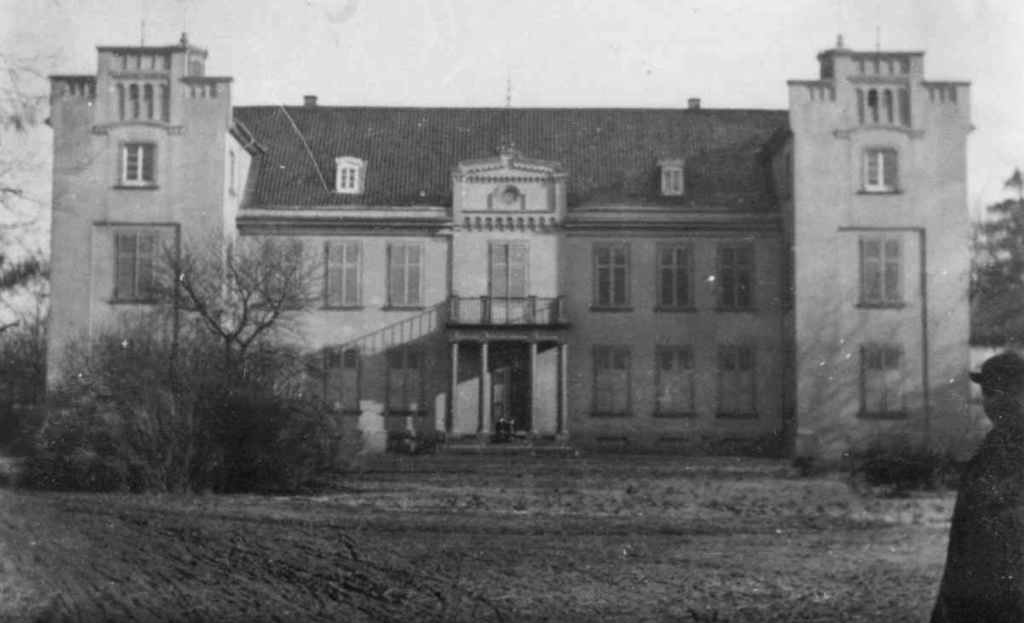
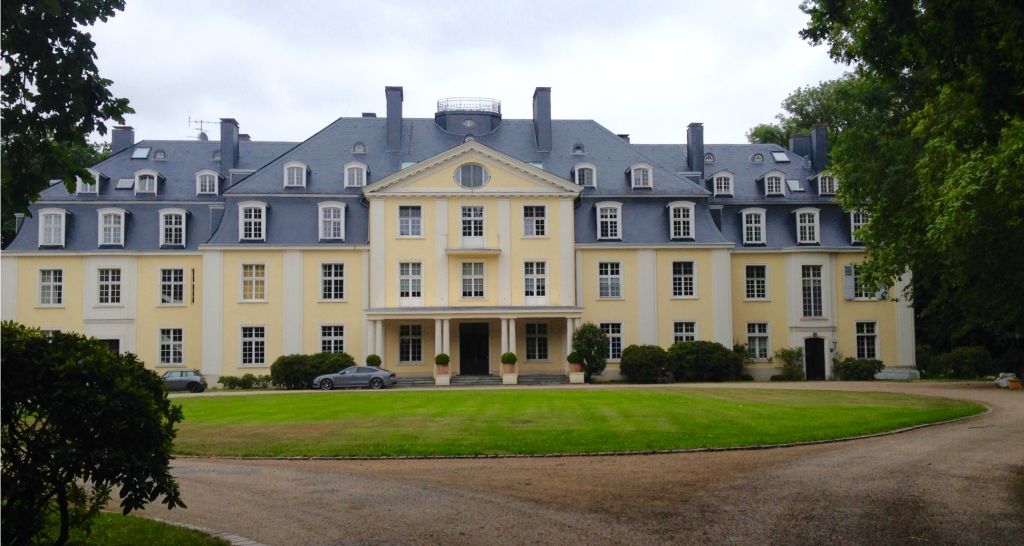
Immediately to the right of Schloss Pesch is the old farm which supplied the estate. For nearly three decades it has been used partly as a gallery for wonderful sculptures. The lovely shaped gable in the picture was rebuilt in the late 1990s after it was badly damaged by a falling tree.
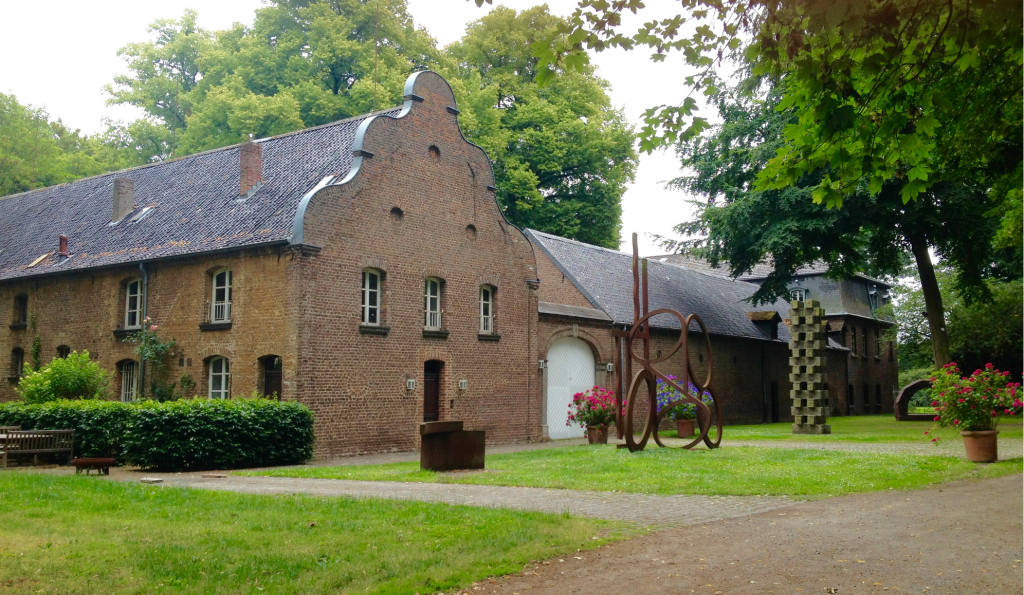
In the current heatwave the only hint of a cool breeze is to be found down by the Rhine. The best place to catch it is the middle of the river from a boat.
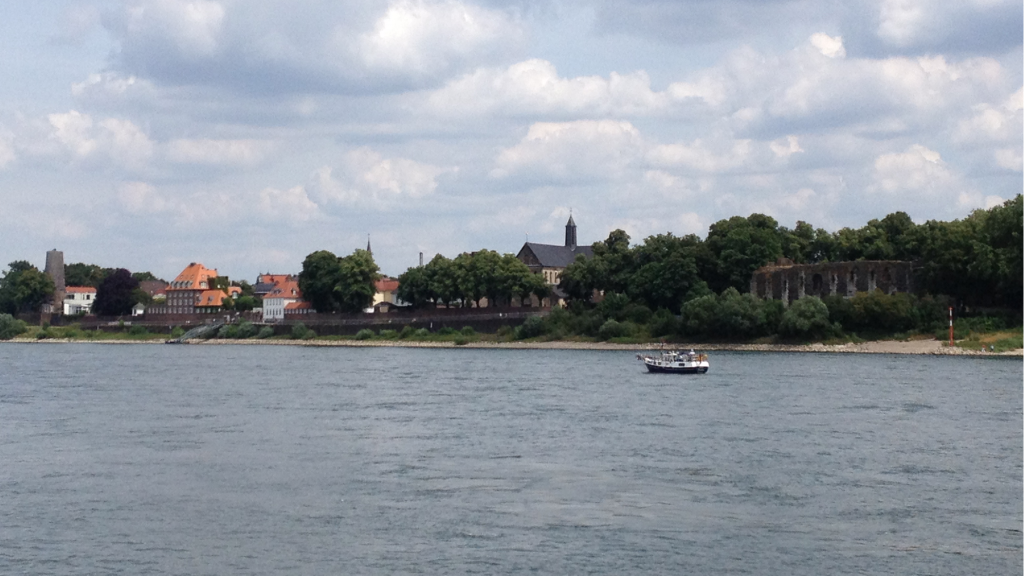
Unfortunately the ferry between Meerbusch and Kasierswerth is not operating at the moment as it is ‘moonlighting’ for a couple of weeks as a pleasure boat at the fair in Oberkassel. We are obliged to cool off as best we can on the banks.
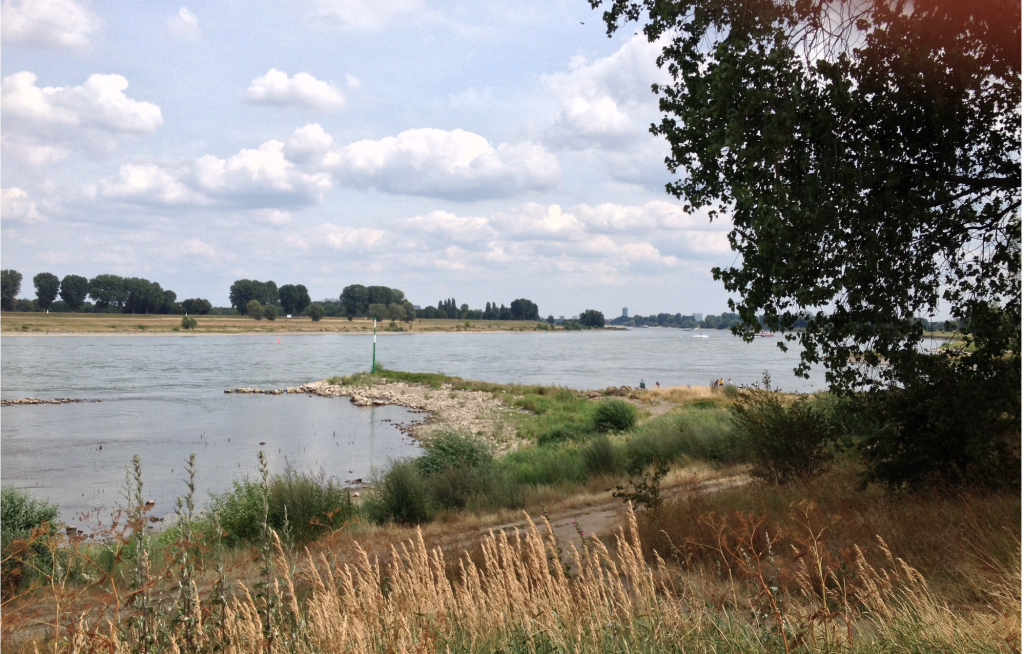
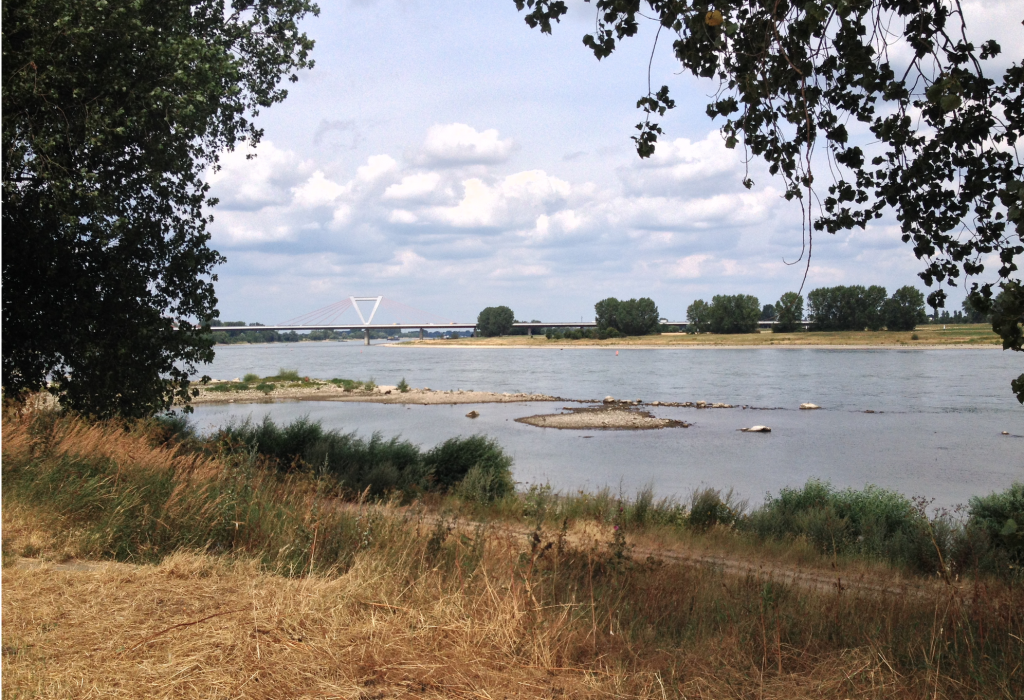
The low level of the Rhine means wide beaches have appeared along parts of the river, especially around Meerbusch. The locals are making the most of this, holding barbecues and parties there every evening.
Back in the days before the park was remodelled, it was quite common to see deer grazing in the grounds, especially in the early mornings. Of course as the park backs onto the Herrenbusch – you’d expect that.
What fewer people know is that it was also not uncommon to find cows grazing on what would once have been the lawn.

Not that the residents actually kept cows. Behind the row of trees at the back of this image there is a field before you reach the woods. The cows which inhabited that field were quite adventurous and enjoyed making occasional excursions through the hedge to roam the grounds of Schloss Pesch. Back then the residents were quite OK with the cows.
Once the park was tidied up and the lawns relaid, the cows were increasingly discouraged from using them as a pasture. It took a while for the cows to take that message on board though.
